Although winter can be rough in the state of Oregon, experiencing the springtime makes it all worth it. One of the first signs that the cold has passed for the year is when flowers begin to blossom. While some people enjoy planting perennials that come back every year, others enjoy the appearance of flowering bushes and shrubs. However, there is also a wide variety of trees that produce beautiful blooms that call this state home. Let’s explore 11 of the most beautiful flowering trees that grow throughout the state of Oregon.
1. Pacific Dogwood

Some dogwood trees can grow to be 40 feet tall.
©Virunja/Shutterstock.com
Dogwood trees are iconic in the state of Oregon. When these trees begin blooming, locals know that spring has finally sprung. The tiny and delicate flowers that these trees produce add a touch of class and elegance to any garden. Pacific Dogwoods typically bloom between March and May, and they typically flower for about two weeks.
2. Western Serviceberry

Although the flowers that serviceberry trees produce are beautiful, they are short-lived and only last about a week at most.
©iStock.com/BrianLasenby
Serviceberry trees are popular for a variety of reasons. Of course, the most popular among these are the beautiful flowers that this tree is famous for producing. However, the fruit that it bears is a favorite for a variety of wildlife, and these trees are able to attract butterflies, moths, birds, and a variety of small rodents. Planting this tree in your garden will not only add beauty to the space but provide food and nectar for many animals.
3. Cherry Blossom
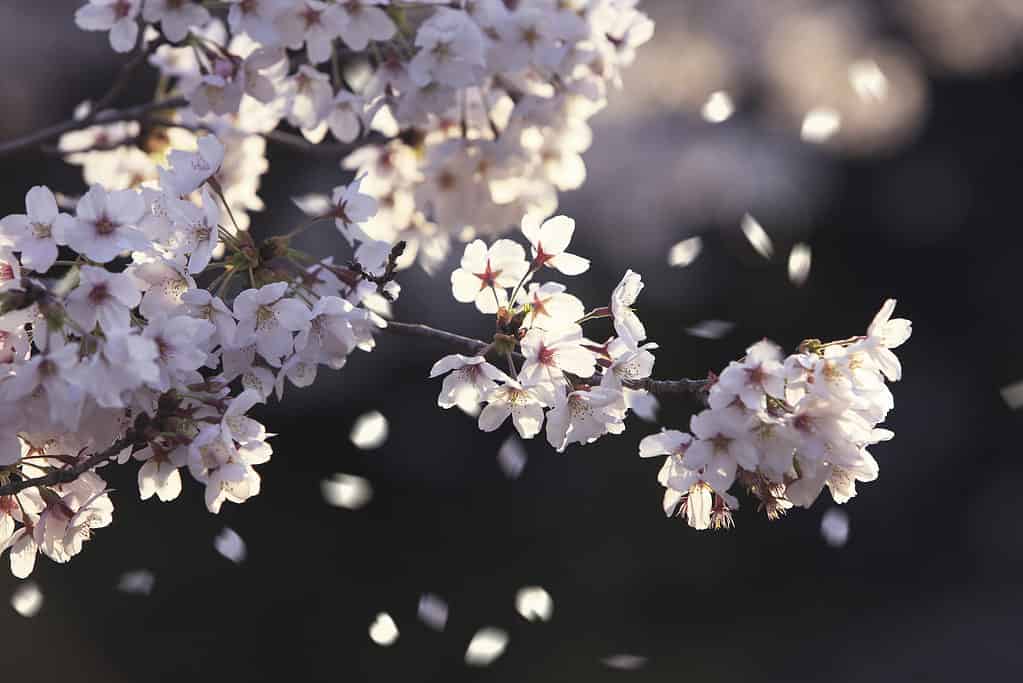
In certain parts of the world, cherry blossom season is a widespread celebration.
©iStock.com/Gyro
Is there any flowering tree more iconic than the cherry blossom? According to the Japanese American Museum of Oregon, the Japanese Cherry Blossom trees on the water in Portland were actually a gift from Japan after the Japanese American Historical Plaza first opened in 1990.
4. Redbud
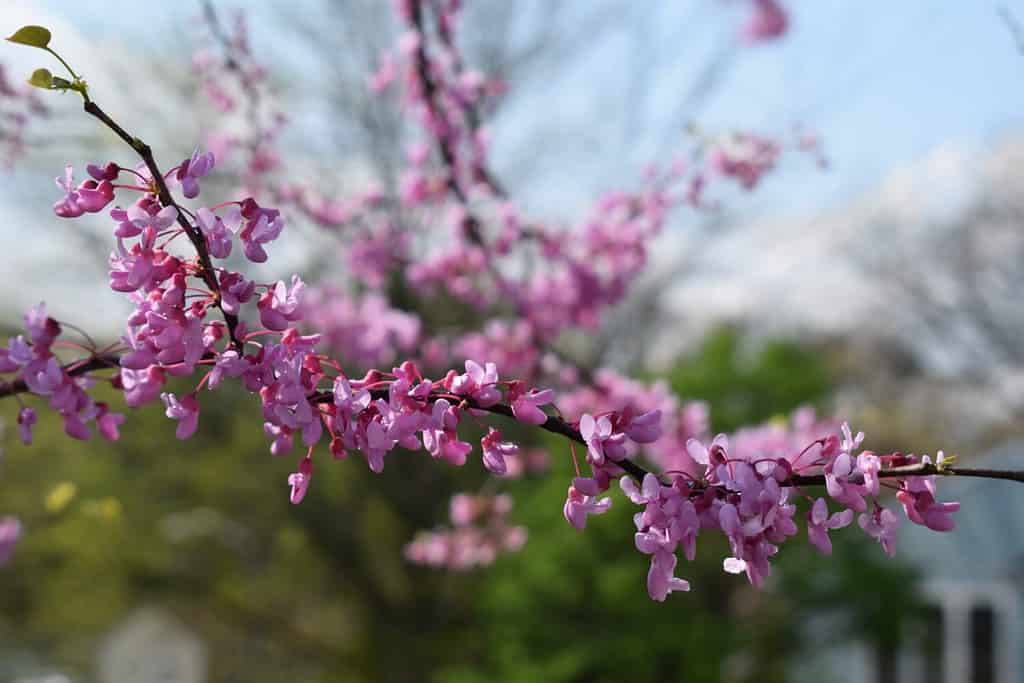
Planting your redbud in an area that gets plenty of sunlight will help it thrive.
©Marsha88/Shutterstock.com
Planting a redbud tree adds a pop of vibrant color to any landscape. These trees are popular among gardeners for their incredible beauty, hardiness, and ease of maintenance. Despite all their good qualities, these trees require frequent watering while young and may die prematurely if those needs aren’t met.
5. Oregon Crabapple

Oregon crabapple trees usually grow to be about 30 feet tall.
©Vladimir_12/Shutterstock.com
Despite having a name like “crabapple,” this tree is breathtakingly beautiful. The Oregon crabapple bears fruit that both animals and humans are able to eat. (However, it’s quite sour, so it’s somewhat of an acquired taste!) The flowers that this tree produces range in shade from white to pink and last about two weeks.
6. Japanese Snowbell
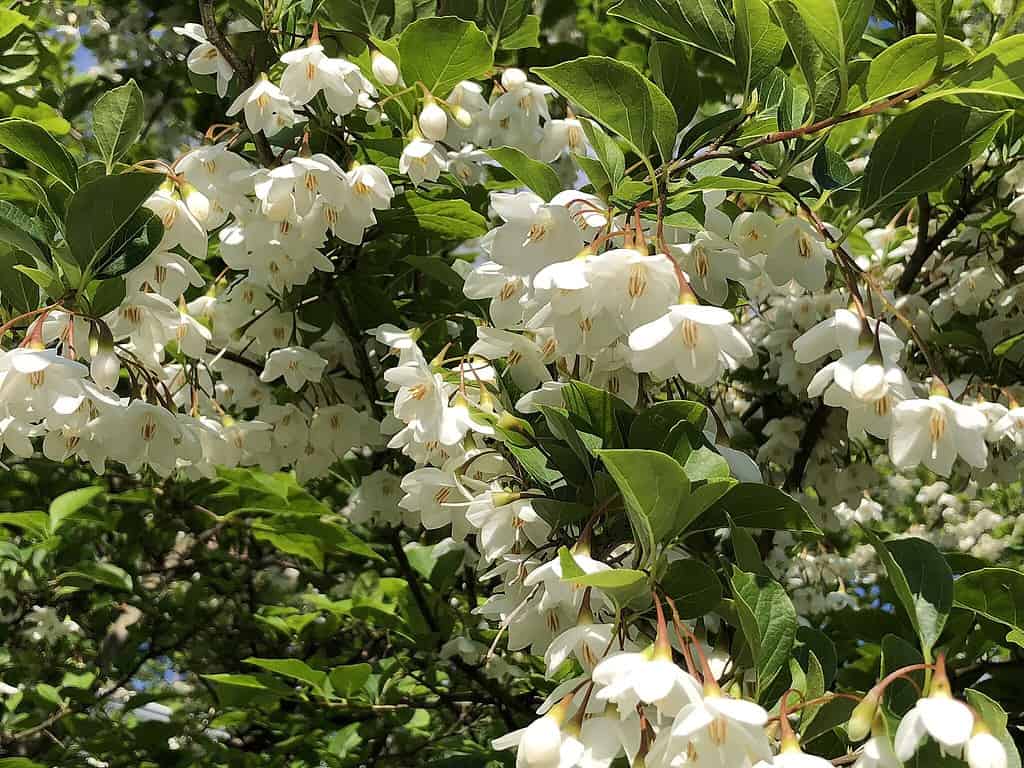
The flowers that bloom on Japanese snowbell trees are typically white, but some have a pinkish appearance.
©Famartin, CC BY-SA 4.0 , via Wikimedia Commons – License
As its name suggests, the Japanese snowbell tree is native to Asia but it has become very popular throughout the rest of the world. The downward-facing blossoms that this tree produces have a pleasant fragrance which many people describe as syrupy and sweet. This tree typically flowers during the late spring and early summer.
7. Chokecherry
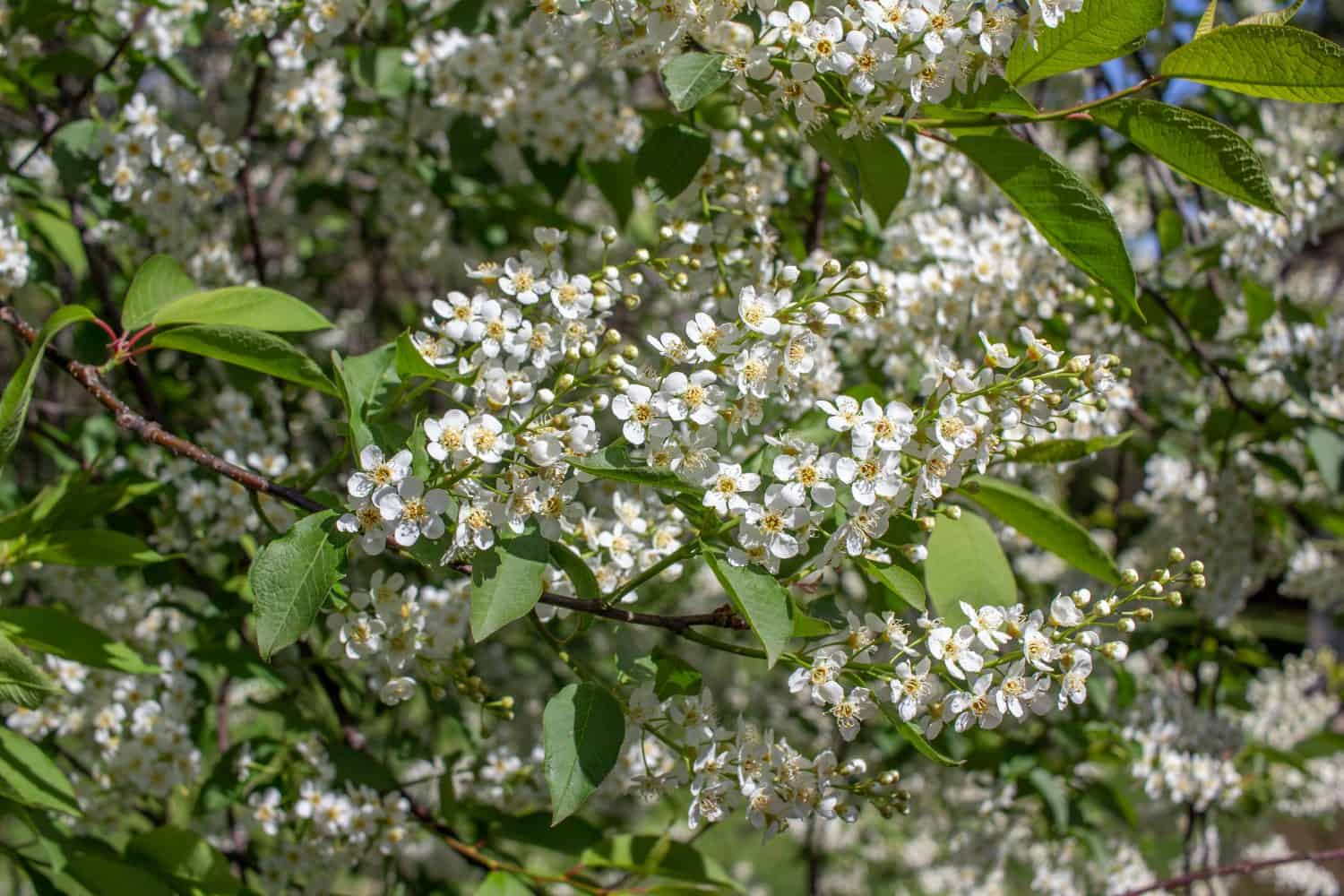
Chokecherries often bloom in mid to late spring.
©Cynthia Shirk/Shutterstock.com
The iconic cylindrical white flowers that chokecherry trees produce can be found all across the state of Oregon during spring. Although humans are able to eat chokecherries, they are toxic to other animals. In particular, owners of dogs, cats, horses, or other pets will want to keep them away from this plant at all costs as it is very poisonous.
8. Douglas Hawthorne
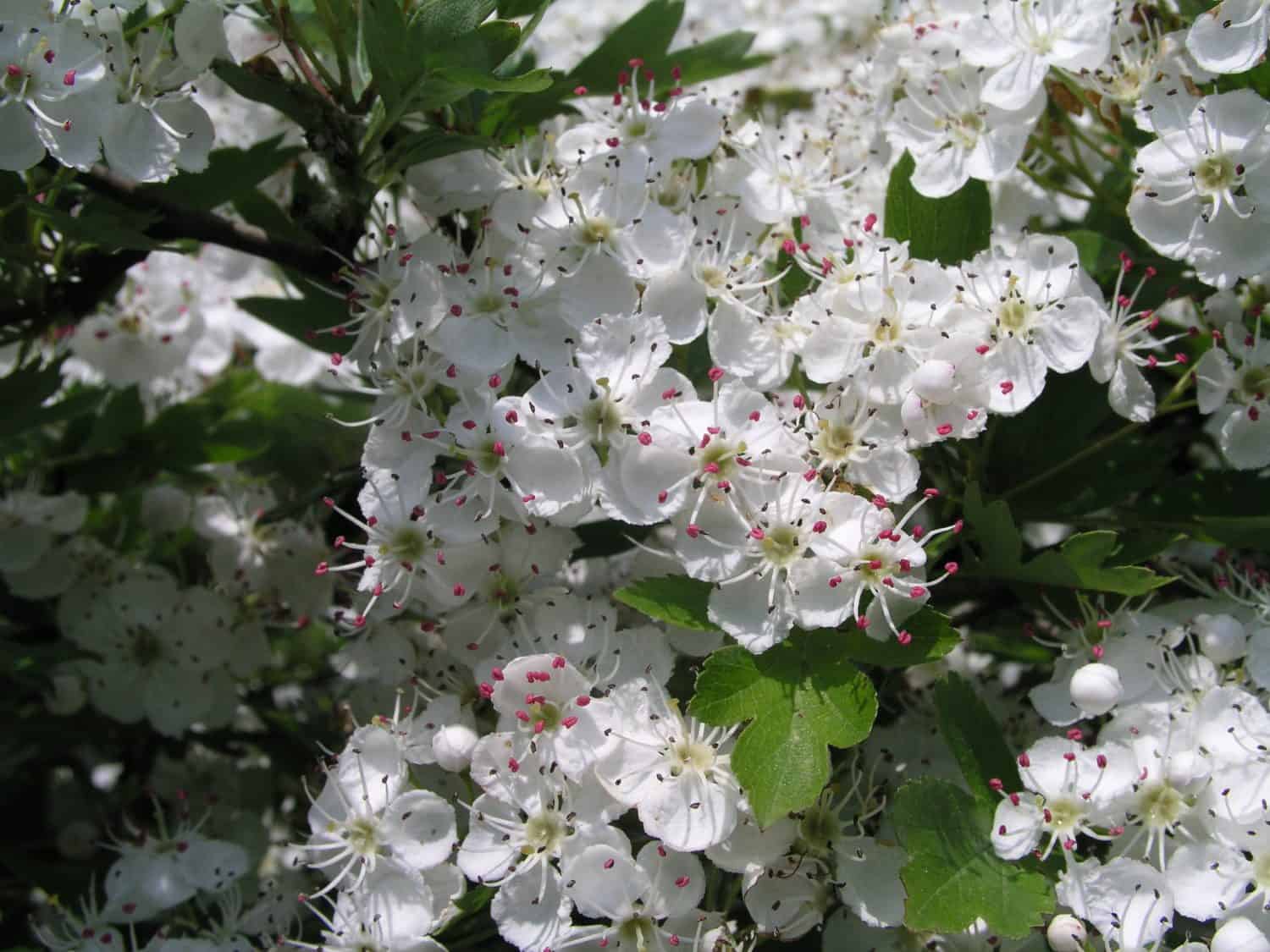
This tree is also sometimes called “Douglas’ thornapple.”
©Lipatova Maryna/Shutterstock.com
Unlike some of the other trees we’ve discussed today, Douglas’ hawthorne is most popular throughout the Pacific Northwest United States. According to the Lady Bird Johnson Wildflower Center, “This species is a handsome ornamental with showy white flowers, glossy foliage, and odd, shiny black fruits. It is named for its discoverer, David Douglas (1798-1834), the Scottish botanical explorer.”
9. Indian Plum
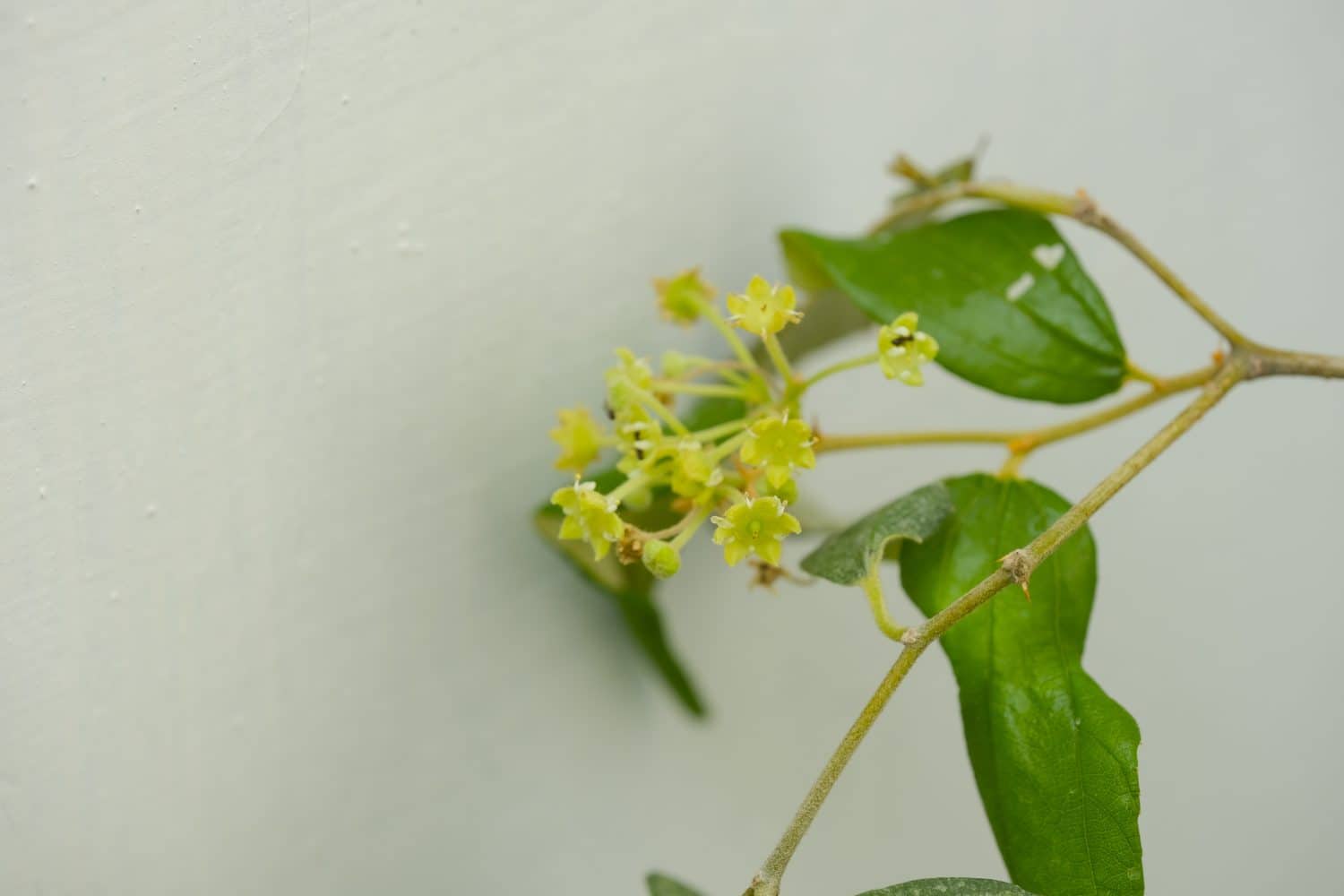
The small flowers that this tree bears have a sweet fragrance.
©Rezmita Anggriani/Shutterstock.com
The Indian plum tree is small, easy to care for, and aesthetically pleasing. What more could you ask for from a flowering tree? This tree blossoms in early spring and flowers until mid-April. These trees are a popular staple in Oregon, and you can find just as many growing in people’s gardens and yards as you can in the wild.
10. Western Wayfaring Tree
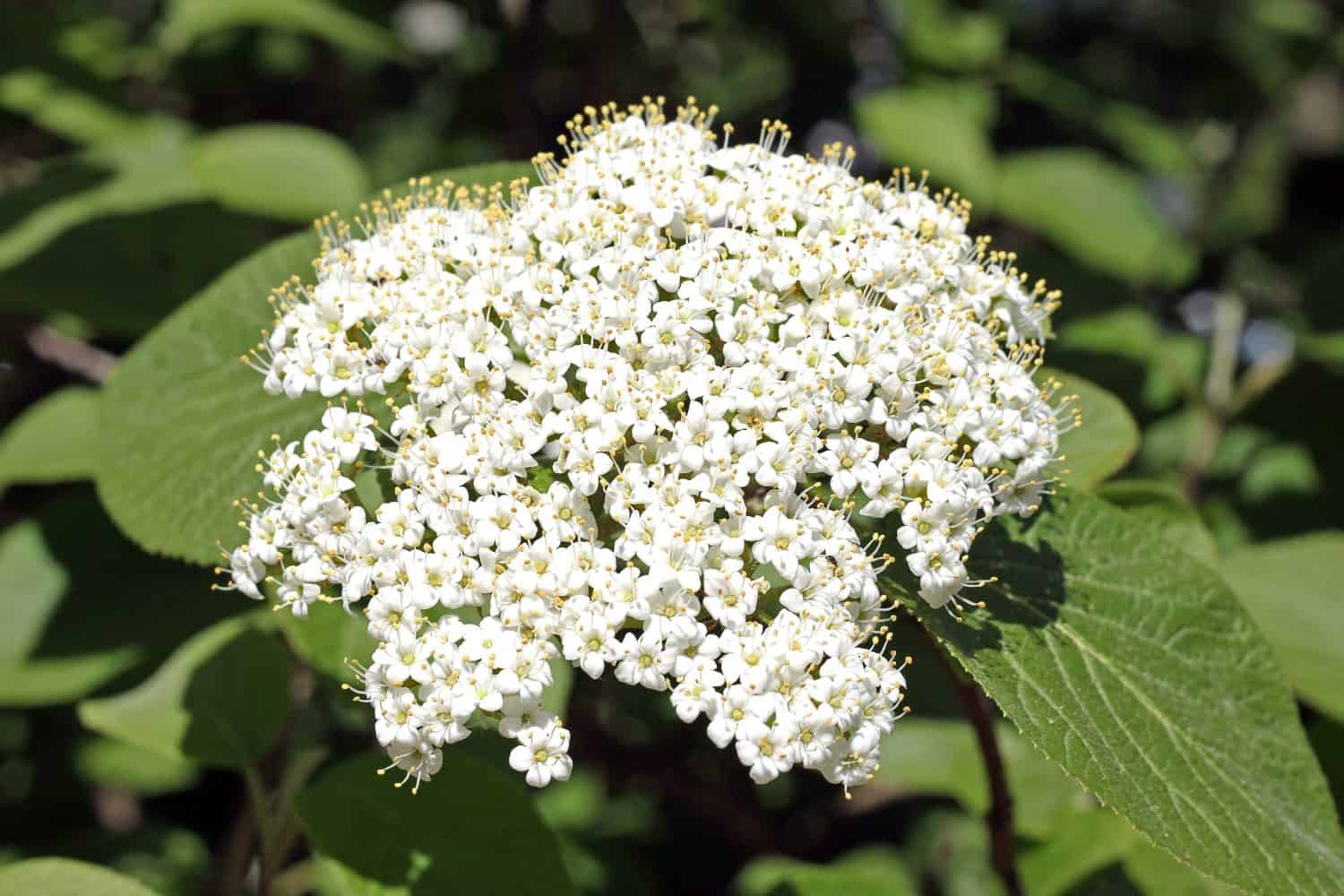
This tree has several nicknames such as the “oval-leaved viburnum,” and “western blackhaw.”
©Jevgenijs Legenkijs/Shutterstock.com
The western wayfaring tree grows adorable tiny white flowers during the spring in Oregon. These trees are easy to care for, however, gardeners should take care to water them during dry periods in the summer. Although this tree produces red berry-like fruit, they are not suitable for consumption by humans or animals.
11. Blue Elderberry

The flowers that blue elderberry trees produce are highly recognizable. They blossom in dense, flat clusters.
©521149/Shutterstock.com
Blue elderberry trees are not only beautiful, but they’re also useful. According to the United States Department of Agriculture, “Only the blue or purple berries of elderberry are edible. Edible berries and flowers are used for medicine, dyes for basketry, arrow shafts, flute, whistles, clapper sticks, and folk medicine.” If properly cared for, blue elderberry trees can live for over half a century.
| Tree | When it Blooms |
|---|---|
| Serviceberry, Indian plum | Early spring |
| Dogwood, cherry blossom, redbud, Oregon crabapple, chokecherry | Mid spring |
| Japanese snowbell | Late spring |
| Douglas’ Hawthorne, western wayfaring tree | Early summer |
The photo featured at the top of this post is © Vladimir_12/Shutterstock.com
Thank you for reading! Have some feedback for us? Contact the AZ Animals editorial team.






